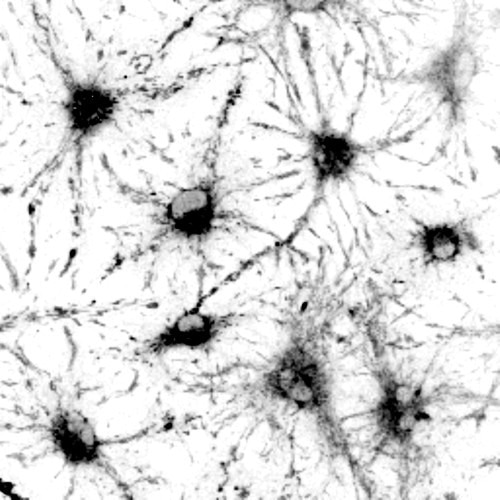With the help of a tool created at the University of Wisconsin–Madison, researchers can better study the various states of stem cells in the nervous system by utilizing the light naturally emitted by biological specimens. This increases the possibility of studying the process of stem cell aging.
 Patterns in the tiny amounts of light emitted by these neural stem cells helped researchers determine whether they were active or dormant without destructive testing. Image Credit: Darcie Moore
Patterns in the tiny amounts of light emitted by these neural stem cells helped researchers determine whether they were active or dormant without destructive testing. Image Credit: Darcie Moore
The UW–Madison team used single-cell genetic material sequencing in conjunction with autofluorescence, or the emission of natural light, to investigate the behavior of neural stem cells. Since autofluorescence can obscure the glowing labels scientists use to track particular signals within a cell, it is frequently regarded as a hindrance. However, using their novel approach, the scientists discovered that quiescence, or the dormant state of stem cells, can be studied using autofluorescence signatures.
Their study was published in the journal Cell Stem Cell.
The quiescent state is very important because the exit from quiescence is the rate-limiting step in making newborn neurons in the adult brain. Aging and neurological diseases limit this exit from quiescence, so we have a great need to study adult neural stem cells in their different cell states. Our goal was to create a new tool that could identify if an adult neural stem cell was quiescent and its different substates (dormant or resting quiescence), or if the cell is activated, entering into the cell cycle.”
Darcie L. Moore, Member, Stem Cell and Regenerative Medicine Center, University of Wisconsin–Madison
Darcie L. Moore is the senior author of the study and a Professor of Neuroscience.
Moore teamed up with Melissa Skala, a Professor of Biomedical Engineering at the University of Wisconsin–Madison, an Investigator at the Morgridge Institute for Research, and a member of the Stem Cell and Regenerative Medicine Center. Skala's lab has been working on fluorescence lifetime imaging to investigate the autofluorescent signatures connected to individual cells.
Certain proteins crucial to metabolism change in quantity and presence when cells transition from active to quiescent states. The way light enters the cell and exits is changed by these molecules. The light “signature” that corresponds to a target cell state was found by the researchers by concentrating on light emitted by cell components that alter significantly during quiescence.
These natural signals within the cell can reliably identify cell function and identity. It’s like nature is trying to tell us all the secrets of life.”
Melissa C. Skala, Professor, University of Wisconsin–Madison
Through the sequencing of RNA, a type of functional DNA used to synthesize the proteins that drive cellular processes, the researchers were able to verify correlations between light signatures and cell state in the mouse neural stem cells under study.
Now that we’ve discovered that this research created not only a tool but gave us unique insight to cellular processes that are different between quiescent and activated neural stem cells, I feel even more strongly that identifying a cell based on how they act versus how they express one protein will shift studies from studying static systems to dynamic systems. That we can study these cells as they change throughout time without destroying them - while also seeing how these functional measures change - is very exciting.”
Darcie L. Moore, Member, Stem Cell and Regenerative Medicine Center, University of Wisconsin–Madison
Source:
Journal reference:
Morrow, S., C., et al. (2024) Auto fluorescence is a biomarker of neural stem cell activation state. Cell Stem Cell.doi.org/10.1016/j.stem.2024.02.011